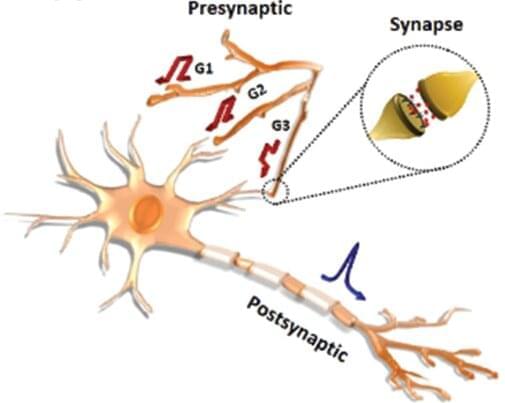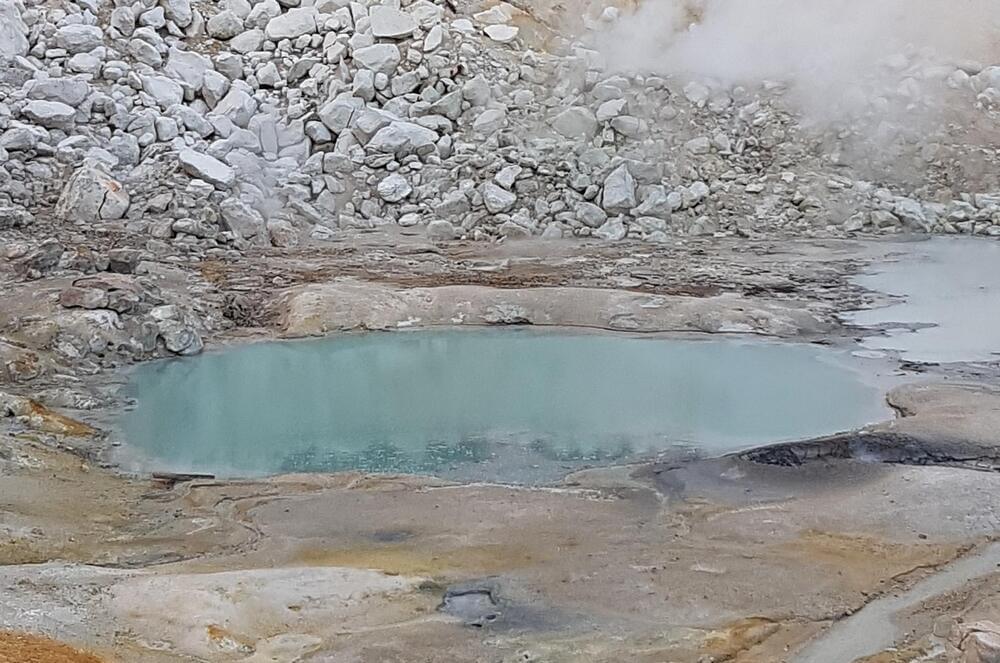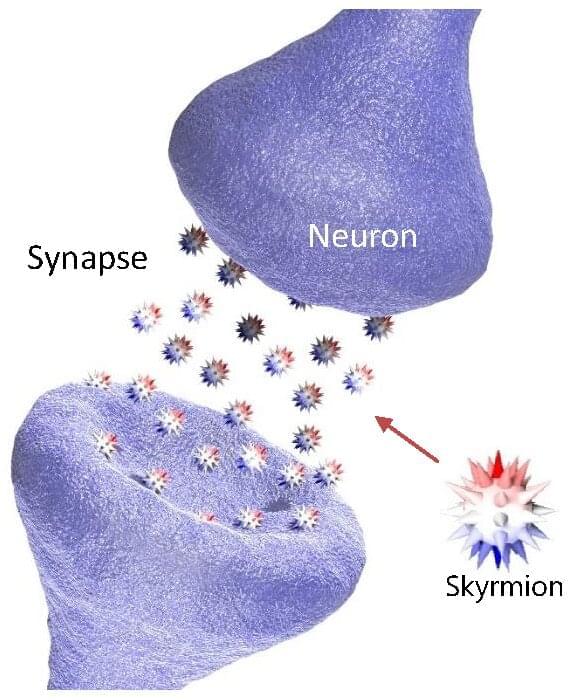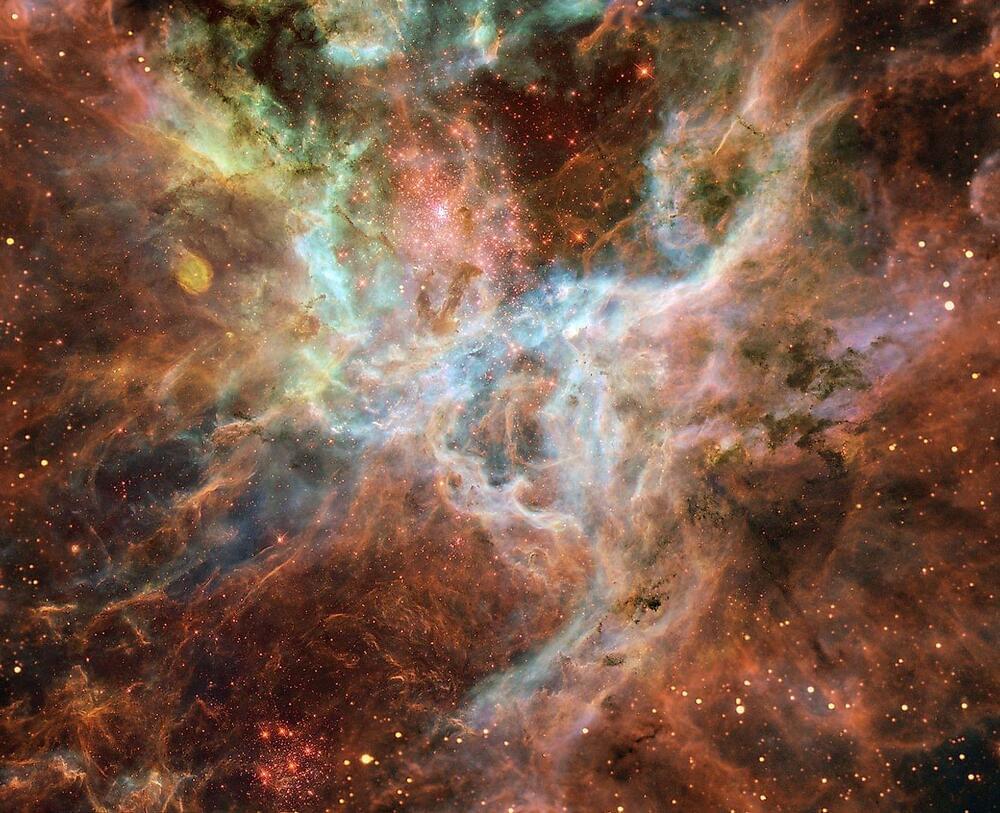Biological advancement is changing everything—from old age and heartache to childish hope.



Advances in artificial-intelligence-based technologies have led to an astronomical increase in the amounts of data available for processing by computers. Existing computing methods often process data sequentially and therefore have large time and power requirements for processing massive quantities of information. Hence, a transition to a new computing paradigm is required to solve such challenging issues. Researchers are currently working towards developing energy-efficient neuromorphic computing technologies and hardware that are capable of processing massive amounts of information by mimicking the structure and mechanisms of the human brain.
The Korea Institute of Science and Technology (KIST) has reported that a research team led by Dr. Jung ah Lim and Dr. Hyunsu Ju of the Center for Opto-electronic Materials and Devices has successfully developed organic neurofiber transistors with an architecture and functions similar to those of neurons in the human brain, which can be used as a neural network. Research on devices that can function as neurons and synapses is needed so that large-scale computations can be performed in a manner similar to data processing in the human brain. Unlike previously developed devices that act as either neurons or synapses, the artificial neurofiber transistors developed at KIST can mimic the behaviors of both neurons and synapses. By connecting the transistors in arrays, one can easily create a structure similar to a neural network.
Biological neurons have fibrous branches that can receive multiple stimuli simultaneously, and signal transmissions are mediated by ion migrations stimulated by electrical signals. The KIST researchers developed the aforementioned artificial neurofibers using fibrous transistors previously developed by them in 2019. They devised memory transistors that remember the strengths of the applied electrical signals, similar to synapses, and transmit them via redox reactions between the semiconductor channels and ions within the insulators upon receiving the electrical stimuli from the neurofiber transistors. These artificial neurofibers also mimic the signal summation functionality of neurons.

Why do some animals live longer than others?
Is aging inevitable, like the rusting of a tin can, or in some sense preprogrammed?
The answers to these questions could drastically improve human health. My latest piece for BioViva Sciences is a concise overview of the comparative biology of aging.
From oversexed marsupials to happy axolotls, the piece covers a lot of ground.
Certain sections could have been fleshed out further, but the piece was already getting long for Medium.
What is aging? Why do some animals live longer than others? What causes different lifespan? What can we learn from the comparative biology of aging?

Circa 2017
There are many theories about how life evolved on the planet Earth, from formation under a layer of ice, protected from the UV radiation above, to vents in the deep sea that provided hydrogen-rich molecules. But now one team of scientists has found quantitative results that support a theory that is literally out of this world. Organic molecules from meteorites that landed in small, warm pools of water may have delivered the ingredients necessary for life to form on Earth.
The team reached this conclusion through a mathematical model. They took data about planet formation, geology, biology and chemistry and inputted these factors into a grand quantitative model they had designed. Their results support the theory that RNA polymers formed in small, warm ponds of water. Meteorites contributed to this process by transferring enough organic molecules to these pools to ensure that RNA started self-replicating in at least one pool.
What’s more, the team discovered that, according to their calculations, life may have have begun on Earth rather early. The process may have started just a few hundred million years after the planet cooled sufficiently to support liquid surface water. The results were published in Proceedings of the National Academy of Sciences.

You might identify with the Mind After Midnight hypothesis if you’ve ever stayed up late angrily commenting on Twitter posts, finishing another bottle of wine, eating a whole pint of ice cream out of the container, or just feeling miserable.
The hypothesis suggests that when humans are awake during the biological circadian night—after midnight for most people—there are neurophysiological changes in the brain that alter the way we interact with the world, especially actions related to impulse control, reward processing, and information processing. The hypothesis was detailed in a recent paper published in the journal Frontiers in Network Psychology.
“There are millions of people who are awake in the middle of the night, and there’s fairly good evidence that their brain is not functioning as well as it does during the day.” —

Skyrmions are ultra-stable atomic objects first discovered in real materials in 2009, which have more recently also been found also to exist at room temperatures. These unique objects have a number of desirable properties, including a substantially small threshold voltage, nanoscale sizes and easy electrical manipulation.
While these properties could be advantageous for the creation of a wide range of electronics, developing functional all–electrical devices using skyrmions has so far proved to be very challenging. One possible application for skyrmions is in neuromorphic computing, which entails the creation of artificial structures that resemble those observed in the human brain.
With this in mind, researchers at the Korea Institute of Science and Technology (KIST) have recently investigated the possibility of using skyrmions to replicate mechanisms observed in the human brain. Their paper, published in Nature Electronics, shows that these ultra-stable atomic structures can be used to mimic some behaviors of biological synapses, which are junctions between neurons through which nerve impulses are passed on to different parts of the human brain.

The second law of thermodynamics explains why some events in nature can never run in reverse, despite the fact that they do not violate other laws of physics. For example, you can crack an egg, yet that cracked egg will never spontaneously put itself back together. Interestingly, if an egg were to uncrack itself, it would not violate the conservation of energy, which states that the total energy content of a system must always remain the same. Obviously eggs don’t randomly put themselves back together, and many other events usually only move in one direction. The second law of thermodynamics explains why this occurs through the concept of entropy. Entropy can be thought of as a measure of disorder. If your room is messy, you can say it has high entropy. If your room is tidy, it has low entropy. The second law of thermodynamics states that the total amount of entropy in a closed system will always increase. Thus, the total amount of disorder in the universe will always increase. Although some processes do go from a high entropy state to a low entropy state, interactions with the environment will always result in a net increase of entropy. For example, a living organism is fairly organized, and so it would have low entropy. However, the way that organism interacts with its environment will increase the total amount of entropy. The second law explains why some events, such as uncracking an egg, can never occur because the total amount of entropy must always be increasing. Entropy also explains how heat moves from warm objects to cold objects. When you leave your coffee out for too long, it inevitably gets colder. That’s because heat can only move from hot to cold, and never in reverse. This occurs because entropy must always increase.
The concept of entropy, and the fact that most things in the universe only occur in one direction, has interesting implications for the flow of time. Time is a poorly understood aspect of our universe. Even the smartest scientists have a hard time providing a good definition for what time actually is. We humans generally perceive time as the passage of events. The past is composed of events that once occurred, the present is events that are occurring, and the future is events that have yet to occur. However, why does time seem to only flow in one direction? As far as scientists know, there are no laws of physics that state time must always move forward. Time obviously only runs in one direction, a concept called the arrow of time. The second law of thermodynamics may actually provide a reason for why there seems to be an arrow of time. Since entropy and disorder must always increase as a whole in the cosmos, events will only occur in one direction, and never in reverse.


In recent years, material scientists have designed a wide range of innovative materials that could be used to create new technologies, including soft robots, controllers and smart textiles. These materials include artificial muscles, structures that resemble biological muscles in shape and that could improve the movements of robots or enable the creation of clothing that adapts to different environmental conditions.
As part of an ongoing project focused on textile-based soft actuators, a team of researchers at Jiangnan University in China recently developed new artificial muscles based on free-standing, single-helical woolen yarn. Their artificial muscles, introduced in a paper published in Smart Materials and Structures, could be used to easily and affordably produce twisted actuators that can detect and respond to humidity in their environment.
“We are trying to design flexible and versatile actuators by leveraging the hierarchical structure design of textiles, ranging from microscales (e.g., molecular chains and aggregation structures) to macroscales (e.g., fiber morphology and textile architectures),” Fengxin Sun, one of the researchers who carried out the study, told Tech Xplore. “Realizing a yarn-based artificial muscle with free-standing and single-helical architecture via eco-friendly and easy-fabrication manufacturing process is still challenging.”
From Alice in Wonderland to The Lord of the Rings, our stories have long depicted magical worlds hidden underground. Yet the most magical account of all might turn out to be reality, as scientists reveal a complex network of reactions between plants, fungi, bacteria, and more, interacting below the soil surface to support the foundations of life. At USDA’s Agricultural Research Service, one part of the research into this intricate underground world involves identifying techniques that will keep nitrogen—a vital element for plant growth—in the soil.
Like all good stories, this one has heroes and villains whose actions can wreak havoc or save us. When properly sequestered underground, some forms of nitrogen like ammonium and nitrate perform heroic feats, fertilizing the plants that we depend on for our food. Yet when they escape the soil in the wrong ways, they morph into closely-related super-villains malignant forms of nitrogen like nitrous oxide that, in the atmosphere, is 300 times more powerful than carbon dioxide in trapping heat, and lingers far longer. In fact, N2O is the largest source of greenhouse gas from agriculture. Escaped nitrogen can also get into groundwater or run off fields and into waterways; once there, it can fuel algae blooms in coastal waters that consume oxygen, harming fish and other aquatic creatures.
To keep nitrogen where it can do us the most good, a team of ARS scientists is developing new techniques for cover crop breeders. Their goal: to help the breeders identify plants whose extended underground root systems (known as the rhizosphere) are most effective at keeping nitrogen in the soil. The root systems, which include microbes that interact with the plants, secure nitrogen via a process called biological nitrification inhibition. Nitrification is a process in which nitrogen is transformed from one form, ammonium, to other forms, like nitrate. When the plants’ root systems inhibit that process, the nitrogen remains safely within the soil, benefiting plants—and those who eat them.